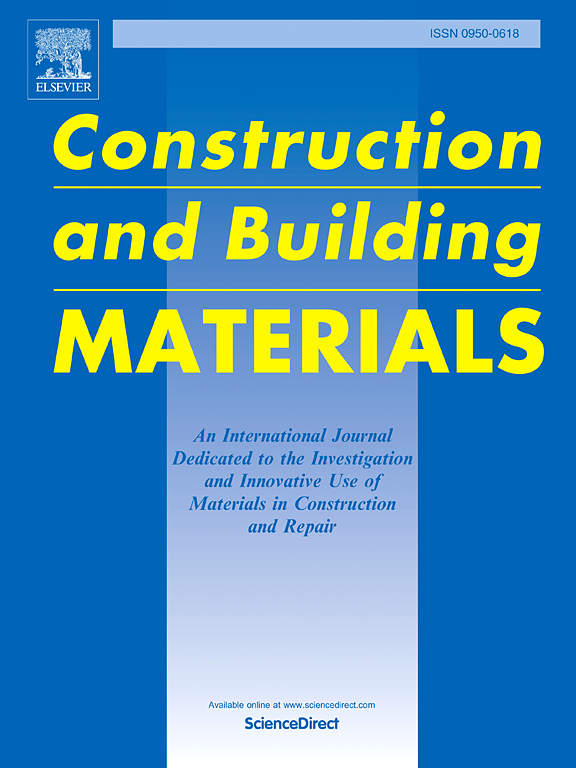Mechanistic study of the effect of aggregate surface wettability on mortar performance and interfacial strength
IF 7.4
1区 工程技术
Q1 CONSTRUCTION & BUILDING TECHNOLOGY
引用次数: 0
Abstract
Aggregates account for approximately 65–75 % of the concrete volume, significantly influencing its performance. However, the effect of aggregate surface wettability on concrete performance is frequently neglected. In this study, 12 types of aggregates were prepared with surface contact angles ranging from 34.0° to 77.9°, using a silane coupling agent (SCA) to modify quartz sand. The effects of contact angle on the fluidity and mechanical performance of mortar, as well as the performance of the interface transition zone (ITZ), were investigated. Further analysis explored the mechanism by which the contact angle affects mortar performance. The results showed that the optimal performance of mortar was achieved at a contact angle of 60.8°, resulting in flexural and compressive strengths of 8.8 MPa and 59.1 MPa, respectively-representing increases of 9 % and 19.5 % compared to unmodified aggregates. Additionally, microscopic tests confirmed that the mechanical performance of the ITZ improved by 53.2 %, while its porosity decreased by 19.2 %, leading to enhanced interfacial bonding performance. However, when the contact angle exceeds 60.8°, the mortar performance gradually decreases. Based on these findings, this study proposed a mechanism for the influence of aggregate surface contact angle on mortar performance, providing a new way to improve the quality of cement concrete and offering important theoretical significance and practical value.
求助全文
约1分钟内获得全文
求助全文
来源期刊

Construction and Building Materials
工程技术-材料科学:综合
CiteScore
13.80
自引率
21.60%
发文量
3632
审稿时长
82 days
期刊介绍:
Construction and Building Materials offers an international platform for sharing innovative and original research and development in the realm of construction and building materials, along with their practical applications in new projects and repair practices. The journal publishes a diverse array of pioneering research and application papers, detailing laboratory investigations and, to a limited extent, numerical analyses or reports on full-scale projects. Multi-part papers are discouraged.
Additionally, Construction and Building Materials features comprehensive case studies and insightful review articles that contribute to new insights in the field. Our focus is on papers related to construction materials, excluding those on structural engineering, geotechnics, and unbound highway layers. Covered materials and technologies encompass cement, concrete reinforcement, bricks and mortars, additives, corrosion technology, ceramics, timber, steel, polymers, glass fibers, recycled materials, bamboo, rammed earth, non-conventional building materials, bituminous materials, and applications in railway materials.
 求助内容:
求助内容: 应助结果提醒方式:
应助结果提醒方式:


